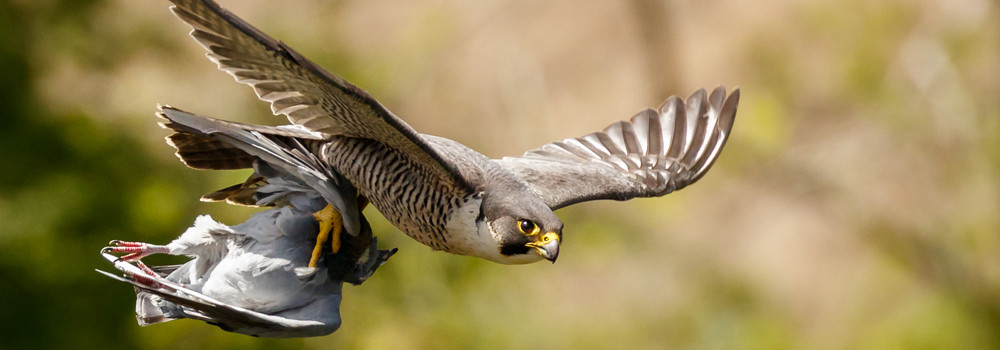The return of breeding Peregrines to former haunts, and the colonisation of urban sites such as industrial buildings and cathedrals, has not gone unnoticed by birdwatchers. It is only now, however, with the publication of the results from the latest national Peregrine survey, that we can put figures on the changing fortunes of this stunning bird of prey.
The Peregrine breeding population in the UK and Isle of Man has been surveyed at intervals of 10 years since 1961/62. The first four surveys documented the recovery of the Peregrine population from the ‘crash’ of the 1960s (when numbers fell to less than half of the pre-war population) to the highest levels since recording began. The new national survey, carried out in 2014, sought to secure a new national population estimate and, in particular, to improve our knowledge of the species in lowland areas not traditionally regarded as being part of the Peregrine’s breeding range.
The 2014 survey, co-ordinated by the BTO in partnership with many other raptor monitoring individuals and organisations, was made possible by the hard work of hundreds of volunteers. These fieldworkers surveyed a combination of known sites and randomly selected survey squares to secure evidence of occupation and breeding by Peregrines. The population estimate derived from the survey puts the UK Peregrine population at 1,769 breeding pairs, an increase of 22% on the previous survey (carried out in 2002).
Most of the increase is accounted for by population growth in lowland England, with breeding Peregrines continuing to occupy new sites. Most of the inland breeding pairs utilise large cliffs, smaller crags or quarries, but an increasing proportion of pairs occupy man-made structures such as buildings, bridges, pylons and communication masks.
Examination of the regional results reveals contrasting fortunes in Scotland, where there the population has declined overall. Worryingly, Peregrine populations are not doing well in the upland SPAs (Special Protection Areas) established to protect them, a pattern evident in both Scotland and northern England. Further losses of Peregrines from such areas might not pose a grave threat to the UK population, but could be important at a regional level. Possible factors associated with the poor performance of upland Peregrine populations may include prey abundance and availability, and illegal killing associated particularly with management of upland gamebirds for shooting, but also with recreational breeding and racing of domestic pigeons. Other factors may have affected Peregrine numbers at a local level; these include avoidance of Golden Eagles, oiling by Fulmars and exposure to a wide range of environmental pollutants.
The findings of this survey provide an opportunity to investigate the effects of these and other issues, with complementary data sets – such as Bird Atlas 2007-11 or the RSPB’s data on upland land use – potentially of great value here.

No comments:
Post a Comment